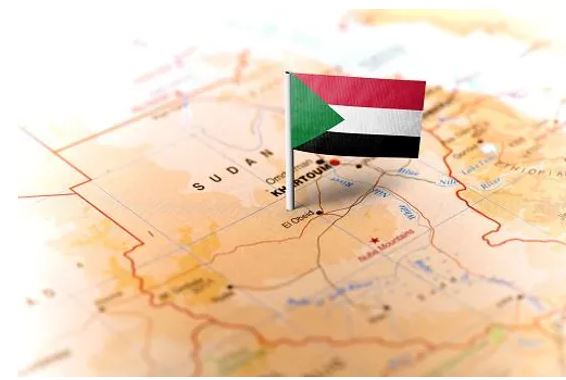Artist Al-Awam: Solemn Person, Solemn Art
03 November, 2019
KHARTOUM (Sudanow) - Friends and disciples of the late fine artist and writer Ibrahim Al-Awam are observing his first anniversary with symposia, talk shows and arts exhibitions.
From TV shows to web pages Awam’s lovers continue to pay tribute to the noble artist and his noble art, sometimes with tearful eyes.
Born in the village of Alzooma, of the works of Meroe District in the Northern State in 1935, Al’awam had lived the life of artistic creation and that of a dedicated educator at both the elementary and university levels.
Finishing his elementary, intermediate and secondary education in Sudan, Awam then graduated from the American University in Cairo, majoring in anthropology.
The ambitious Awam then joined the College of Fine and Applied Arts of the Sudan University of Science and Technology here where he graduated with a BA in fine arts.
Awam had launched his first arts show in 1956 in the City of Alfashir in Darfur. Then he launched 20 other private shows and another 19 collective shows with other artists, both inside and outside the Sudan.
His most outstanding external expos were held in France, Cairo, Germany, Korea, London, Tehran and Alsharja in the United Arab Emirates.

His portraits had exceeded 9000. For this achievement and for his dedication as a civil servant, Awam was decorated with the Golden Arts Order in 2002.
Awam was always present on the country’s cultural scene and at one point in his productive life he assumed the office of General Manager of the Youth and Children Palace here, a facility concerned with the teaching of drama and music.
He had also assumed office of head department of arts at the Bakht Arruda Teacher Training Institute and the office of associate professor of arts at the Fine and Applied Arts College.
As an artist, Awam had founded with other prominent fine artists the ‘Alwahid Arts School’. Alwahid in Arabic translates “The One God”.
Awam had co-founded this school with artists, Prof Ahmed Abdelaal, Mohammad Hassan Faki, Abdelbasit Alkhatim and Ahmed Hamid Alarabi.

About this school Awam had asserted that the motto of this school is that “it is the one God, the Almighty is the maker, the creator, the imager, the source of all beauty in the universe.”
According to him, the school is concerned with ‘the philosophy of vision’.
This philosophy considers the bonds of historical, religious, cultural and economic life as living tributaries that feed fine art, making of it a project for a comprehensive enlightenment vision.
In its statute, the school said any contemporary work of art is valueless without a civilizational meaning. For this, the Alwahid School, is bound to the Arab Muslm heritage.
As a writer and critic Awam had written a biography of the late melodist Ibrahim Awad. He also had a published poetry collection he named Aldarb (The Way), beside four other poetry collections (yet to be published).
He had also written introductions for a number of books and poetry collections. His latest publication was a book about Sudanese culture he titled ‘Order of Thought and Beauty’. The two-parts- book maps the history of Sudanese fine arts and, thus, contains a lot of portraits by Sudanese artists. Researchers consider this book one of the most important references on Sudanese fine arts.
Another important characteristic of Awam’s creativity is a number of life-size portraits he drew for a number of Sudanese artists and men of letters. The list includes portraits of poets Mohammad Almahdi Majthoub and Ismael Hassan.
Awam had also written and lectured extensively about Sudanese writers and artists. He had also launched the Zaha’a Altahir Cultural center, Alawam Gallery and what he called the Gallery Cultural Group.

He had special concern for creative youths.
As a student at the American University, he wrote a regular column in the University’s magazine.
As an artist, Awam had contributed to the design of tens of books and also designed trade marks and sign boards of many private and public institutions and companies.
Many of Awam’s works are reserved as cultural property at the Sudanese Culture Ministry, the Egyptian Culture Ministry, the African Arts Society in Cairo and the Jordanian Royal Museum.
He had also arbitrated several arts contests inside Sudan and abroad.
Awam had his own vision about the Sudanese identity which he sums up in: ”It is imperative to be aware that we are a cultural Arab-Islamic formation whose roots are ingrained in the African soil. Our heritage and history had helped us with kindling the torches of light across Africa. We had always been the successful melting pot of the Arab- Islamic Culture and the African frame of mind. That culture had kept the African frame of mind and had moved forward with its positive capabilities.”

About his early life in the village, Awam said he was most affected as a child in his home villages of Albarkal and Alzooma by the unity of the people ’where every woman is your mother and every man is your father.’
He said as a child he used to make dolls from clay for his male and female peers. He was extremely touched by the ancient artifacts of Albarkal Mountain and the captivating drawings and inscriptions they carried.
He said as a school boy he used to spend his breakfast fees on the leasing of books at Wad Madani bookshop, an indication of his love for reading and knowledge.
At the secondary school he joined the arts society, an inclination that went with him to the American University in Cairo. There he studied a course in ceramics and other courses taught by American artist Silvia Jorson that instilled in him a love for sculpture.
In Khartoum he was taught by artists Shafeeq Shawgi, Ibrahim Alsalahi, and Bastawi Baghdadi at the College of Fine Arts.
Awam had defined fine art as a “visual language whose rules and terminology are lines, spaces, the diversity of formations, color relations, weights and mass and their relation with space, forms, designs and order. That language has its beauties which interact with souls and spirits.”

On the sidelines of an arts show organized in Sharja, UAE, on Awam death’s first anniversary, the Cultural Consultant of Sharja Ruler Sultan Mohammad Algasmi, Dr. Yousif A’idabi, considered the Sudanese culture to have lost one of its fine arts pillars by the departure of Awam.
Dr. Aidabi said Awam, as one of the latest of a generation of pioneering fine artists of the 1970s/1980s, had leaded a marked continuous artistic march whereby mankind was the major focus of his works.
For his part Omar Abdelaziz, who chairs the Sudanese community club in Sharja said Awam was an expressionist, abstract artist who managed to project the unseen on the white space of the portrait.
“In Awam’s artistic epic, we notice his creation that confirms his painting vision stored in locality on the way towards globalism,” said Dr.Abdelaziz.
“Awam had worked on the dot, the line, the semicircle and the harmony of colors,” he said.
Journalist A’ida Abdelhameed said Awam had ‘dipped’ into the letter, played the strings of beauty in a transparent luminous world, deciding to sail into that invisible world to explore the dim light within.
“Awam’s varied drawing styles, that range from cubism to surrealism on the one hand and on invoking Arab and African folk art, had formed his outstanding creative experiment, she said.
E N D
YH/AS








